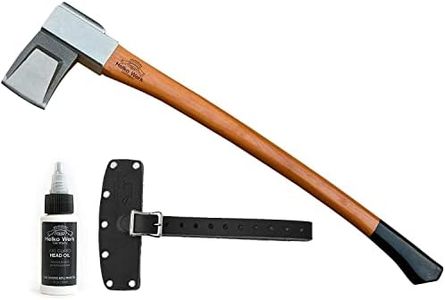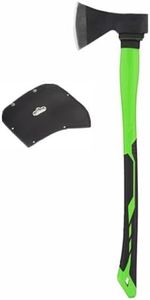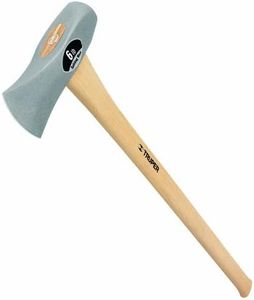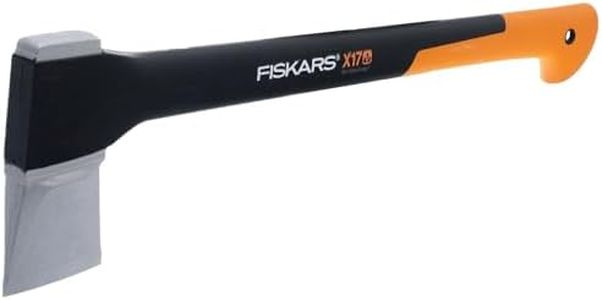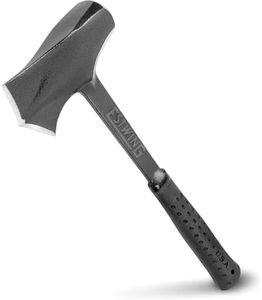We Use CookiesWe use cookies to enhance the security, performance,
functionality and for analytical and promotional activities. By continuing to browse this site you
are agreeing to our privacy policy
10 Best Splitting Axe
From leading brands and best sellers available on the web.By clicking on a link to a third party's website, log data is shared with that third party.
Buying Guide for the Best Splitting Axe
Choosing the right splitting axe is all about matching the tool to your needs and physical abilities. Splitting axes are used to split logs for firewood, and they come in various shapes and sizes. Before making a decision, consider how much wood you plan to split, the kinds of wood (hard or soft), and your own comfort and experience level. A well-selected axe can make your work easier and safer, while the wrong one can leave you tired, frustrated, or even injured.Head WeightThe head weight of a splitting axe refers to how heavy the metal part at the end of the handle is. This is important because the heavier the head, the more force it delivers to split through wood, but also the harder it is to swing repeatedly. Head weights typically range from about 2 pounds up to 6 pounds. For most users, a mid-range head weight (around 3-4 pounds) gives a good balance of power and manageability. Lighter heads are easier to control and better for smaller pieces of wood or users with less strength, while heavier heads are suited for splitting larger or tougher logs, especially if you have the strength and stamina to use them safely.
Handle LengthThe handle length affects both leverage and control when swinging the axe. Shorter handles (around 20 inches) are more controllable and are good for splitting small to medium logs, or for those with limited space or experience. Longer handles (up to about 36 inches) give more leverage and power, making it easier to split large, tough logs, but they require more strength and skill to use safely and efficiently. Choose a handle length that matches your comfort, height, and the size of the wood you'll be splitting most often.
Handle MaterialAxe handles are commonly made of wood, fiberglass, or composite materials. Wooden handles (usually hickory) offer a traditional feel and can absorb shock well, but may require more care to prevent cracking. Fiberglass or composite handles are generally more durable and resistant to weather and impacts, but may transmit more shock to your hands. Think about whether you prefer a classic feel and are willing to maintain the handle, or if you want a more modern, low-maintenance solution.
Axe Head ShapeThe shape of the axe head determines how effectively it splits wood. Splitting axes have a wider, wedge-shaped head designed to force the wood apart rather than cut it like a chopping axe. Some axes have heads that flare out quickly, while others have a more gradual wedge. A broader wedge can split logs faster but might get stuck in very tough wood. A narrower wedge might penetrate easier but splits a little less forcefully. Consider the typical size and type of wood you'll be dealing with to find the best balance for your needs.
Overall Weight and BalanceThe overall weight and how the axe feels in your hands are crucial for both effectiveness and safety. You'll want an axe that feels balanced—neither too head-heavy nor too light—so it’s comfortable to swing repeatedly. The right balance often depends on your own build and strength. If possible, test how it feels in your grip before purchasing, or read user impressions regarding balance for specific axe types.
Safety FeaturesSome splitting axes come with added safety features like non-slip handle grips or overstrike protection (a collar on the handle below the head to protect against missed swings). These features add extra durability and can help prevent accidents, especially for beginners or those splitting a lot of wood. Think about where and how you'll be using your axe, and whether these added features might be especially useful for you.



